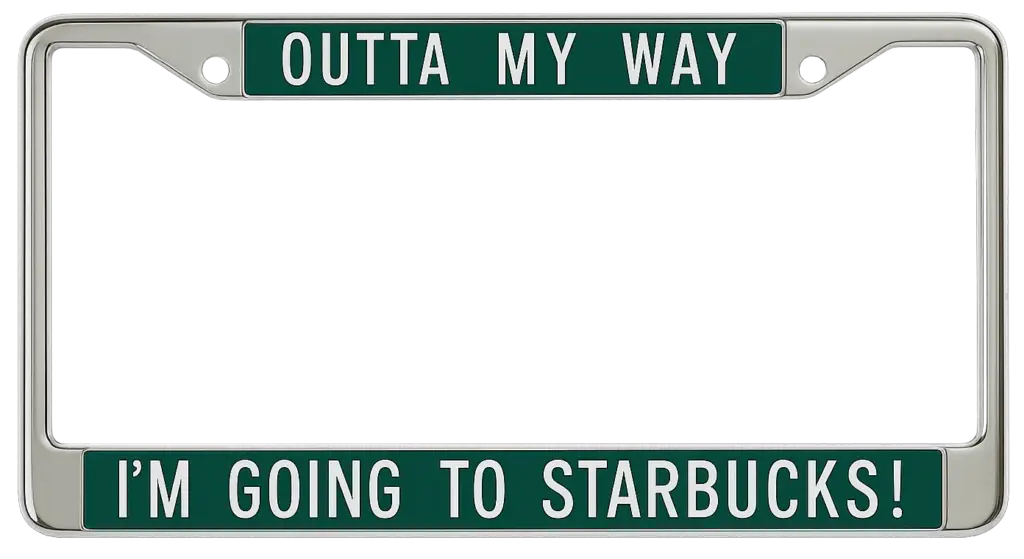When Customers Become Walking Advertisements
I was at a Starbucks drive-through when I noticed the license plate frame of the car in front of me. The license plate read “Outta my way, I’m going to Starbucks!”. The reason I took the picture was it was interesting to me that I was in a long line of cars for a $4 latte and the car directly in front of me loved the company so much they proudly displayed it on their license plate.
What does it say about a company when people (not companies) make and sell license plates which allow you to display your affection for a particular company?
I don’t think it is too difficult to create a company people will love and respect so much they will tell the world about it. Companies of course try to attract customers to get them in their door, but are some companies simply looking to get customers in the building, or are they looking to build relationships with their customers?
I think you can build a relationship with your customers through your brand, transparency, serving the community it serves, customer service, quality products, and differentiating products. I think if you do any of those things to a high standard (not too difficult these days) customers will come back, and they may even be so passionate about your company they will tout it on their license plate.
The Recipe for Brand Loyalty
Brand Identity
Strong, recognizable, and meaningful
Transparency
Honest communication with customers
Community
Serving the local neighborhoods
Customer Service
Going above and beyond expectations
Quality Products
Consistent excellence every time
Differentiation
Standing out from competitors
Your Recipe for Success?
Is there a recipe for the success of a company? If you were to make the perfect recipe for a company you love so much you wanted to share it with the world, what would it consist of in your opinion?
